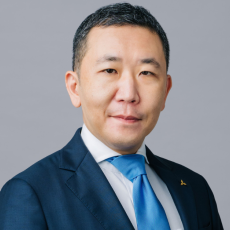What are the key activities of Mitsubishi Power in the Asia Pacific region?
Mitsubishi Power is a power solutions brand of Mitsubishi Heavy Industries, and we provide power generation solutions to various countries around the globe. Starting from the 1960s, we have been serving the Asia Pacific market, and, up to this point, we have delivered over 150 gas turbines, 300 steam turbines, and 150 steam generators. Adjacently, we just received orders of three new hydrogen-ready projects in Singapore – the Keppel Sakra Cogen Plant, Meranti Power open cycle gas turbine (OCGT) power station, and the Sembcorp Cogen combined cycle power plant (CCPP) – where we will use our advanced gas turbines to co-fire hydrogen starting from 2025.
Due to the region’s geographic specificity, geothermal plants can be a good prospect to develop sustainable power generation. Is this an opportunity you find enticing?
In the region, there are several countries that have rich geothermal reserves, especially in Indonesia and Philippines. As long as the area generates sufficient steam, this renewable energy source can be extremely useful, mainly thanks to its very stable nature compared to other renewable energy sources. Considering these, our steam turbines portfolio is the strong suit that we tend to promote across these specific countries. As a leading provider of end-to-end solutions, our strength in the optimization and integration of power plants ensures that we garner the maximum output from geothermal energy – increasing power generation capacity to meet the power needs of communities in the region.
What concrete goals and achievements of Mitsubishi Power would you like to highlight? You have mentioned hydrogen…
One of our primary focuses is supporting our customers with decarbonizing their existing facilities by increasing the fuel efficiency of their plants with our state-of-the-art gas turbines. In Singapore, for instance, we upgraded M701F gas turbines for two gas turbine combined cycle power plants by Senoko Energy, reducing carbon emissions by approximately 15,000 tons of carbon emissions annually.
In line with our commitment to support the energy transition in the region, we are also actively engaged in conducting feasibility studies in collaboration with government owned utilities companies, such as EGAT in Thailand, TNB in Malaysia and PLN in Indonesia. These studies aim to pave the way for adoption and co-firing of cleaner fuels like hydrogen, a technology we are already implementing in several Singapore projects. By 2025/2026, we target to be able to co-fire 30% hydrogen across various plants and contribute to cleaner energy production.
To demonstrate the potential of hydrogen as a cleaner fuel source, our main gas turbine factory in Japan also hosts the Takasago Hydrogen Park, the world’s first center for validation of hydrogen-related technologies. In the facility, we produce hydrogen, which is then transported to the power verification plant where we demonstrate our gas turbine hydrogen firing/co-firing technologies.
As part of the MHI group, we are also working toward achieving our net zero target by 2040, ten years sooner than most governments, given our role as an innovative energy solutions provider and early adopter.
What would you outline as the main challenges for the mass adoption of your hydrogen technology?
In order to achieve net zero, the widespread adoption of hydrogen technology is essential. However, as Asia Pacific is home to many emerging countries with rising energy demand, countries need to balance sustainability and decarbonization with energy security and affordability.
Although we have the necessary expertise and the technological roadmap for advancing our hydrogen technologies, the current challenge lies in its practical deployment primarily due to the lack of consistent and competitively prices hydrogen supply within our region. To tackle these hurdles effectively, collaboration with governmental agencies and international partners is imperative. By working together, we can explore and establish the right mechanisms that address the economic implications associated with these decarbonization endeavors and facilitate a gradual and stable energy transition.
Do you find your collaboration with government officials and policy makers to be productive enough?
With our global head office based in Japan, Mitsubishi Power maintains active communication and close collaboration with the Japanese government. During this year's G7 Summit held in Hiroshima, Japan’s Prime Minister Fumio Kishida emphasized the country's commitment to decarbonize to reach the net zero target as soon as possible.

To better support and promote this engagement, Japan has introduced the Asia Zero Emission Community (AZEC) mechanism to accelerate the energy transition in the region. The initiative aims to spur international and regional cooperation to explore transition technologies, and spark discussions about how we can more effectively move to the next stages of development. Mitsubishi Power is committed to collaborating with local government and policy makers in the region to navigate each country’s individual pathway towards decarbonization.
Tell us about your digital power plant capabilities and the AI-enabled TOMONI Intelligent Solutions.
Many of our power generation equipment are equipped with control systems that are connected to remote monitoring facilities. This integration enables us to access real-time information and continually monitor the operational status of various equipment. Should any irregularities be detected, we possess the capability to swiftly adapt the operation mode, thereby mitigating potential issues. Additionally, we can leverage this data-driven insight to introduce refinements to maintenance procedures, optimizing the overall performance of the site. Across some select sites, we have also integrated TOMONI, our suite of intelligent solutions which uses AI technologies to automatically optimize key parameters such as combustion dynamics and part load heat rate in an intelligent and efficient fashion.
What are some of the main goals that you would like to achieve at Mitsubishi Power in the following years?
We are living through exciting times, with the energy transition and decarbonization becoming a key consideration of our business. In the wake of all these changes, we aim to progress and complete the current projects in Asia Pacific that are set to shape a more sustainable future, including the hydrogen projects in Singapore I mentioned earlier with Keppel, Meranti Power and Sembcorp which are set to be operational by 2025/2026. We will also concentrate on completing global landmark projects that are paving the way for the region, like the Advanced Clean Energy Storage (ACES) hub in Delta, Utah, that we will develop in collaboration with Magnum Development. We are also conducting various feasibility studies on clean energy technologies with local public sector partners around the region in the near-term, which aim to unlock new opportunities for cleaner energy solutions.
These forthcoming three to five years are vital as Mitsubishi Power focuses on completing these projects and works towards our goal of increasing the ratio of hydrogen co-firing -- from 30% now to 100% by or around 2040. We are extremely excited and deeply committed to support and lead the power generation industry toward a more sustainable future.






